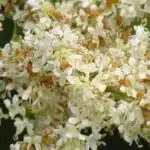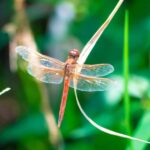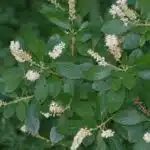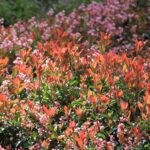Japanese andromeda, also known as Pieris japonica, is an evergreen shrub native to Japan, Korea, China and Taiwan. It is prized for its beautiful clusters of white flowers that bloom each spring. With the right care and maintenance, this stunning shrub can be a beautiful addition to any garden or landscape design.
As an expert in botany and gardening, I know how important it is to provide proper care for this delicate shrub to ensure that it stays healthy and blooms season after season. In this article, I will discuss how to grow and care for Japanese Andromeda so that you can enjoy its beauty year after year.
In my experience as a specialist in botany and gardening, I understand the importance of providing quality care for plants in order to keep them healthy and help them thrive. With the right knowledge and dedication to caring for your Japanese Andromeda shrub, you can create a beautiful showcase of white blooms that will brighten up any outdoor space.
Where To Plant Japanese Andromeda
It is a coincidence that I am here talking about the Japanese Andromeda, which blooms in the springtime and can be found around the world. As a botanist and gardener, I have learned that this shrub is easy to grow with proper care. Let me begin by discussing where to plant it for best results.
When it comes to location, Japanese Andromeda prefers partial or full sun exposure. It should be planted in an area that gets at least six hours of direct sunlight each day in order to thrive. If you are planting multiple specimens, make sure they are spaced two feet apart from each other to allow them enough room to grow. Additionally, this shrub does not tolerate waterlogged soil so it’s important that you select an area with good drainage.
Finally, when you choose a spot for your Japanese Andromeda, make sure there is enough protection from strong winds as these can cause damage to its branches and foliage. Planting next to a fence or wall can provide some shelter from gusts of air while still allowing ample sunlight through the day. The ideal spot will also have soil with good fertility levels and adequate moisture retention for optimal growth and development of the shrub throughout its life cycle.
Ideal Soil Conditions For Japanese Andromeda
Japanese andromeda, also known as Pieris japonica, is a beautiful evergreen shrub native to Japan, Korea and China. It’s easy to see why this plant is such a popular garden addition, with its stunning white flowers in the spring and its bright red foliage in the fall. But for optimal growth, it’s important that you understand what ideal soil conditions are for Japanese andromeda.
When planting your Japanese andromeda, it’s important to ensure that the soil has good drainage. The pH should be between 4.5-6.0; if your soil falls outside of this range, you can always amend it with some peat moss or compost before planting. Additionally, make sure that the soil is humus-rich; adding organic matter will ensure that the roots get all of the nutrients they need to thrive.
For best results, give your Japanese andromeda plenty of room to grow – around 3 feet between each plant – so they don’t become overcrowded. You can also use a slow-release fertilizer in the spring to promote healthy growth throughout the season. Don’t forget to water regularly when there hasn’t been any rain; about an inch per week should be enough for your shrubs to stay happy and healthy!
Taking care of these environmental needs will help ensure that your Japanese andromeda reaches its full potential – creating a lush landscape with gorgeous blooms year after year!
Best Light Conditions For Japanese Andromeda
The Japanese Andromeda is an exquisite and beautiful shrub that can bring color and life to any garden. With just the right conditions, this variety of Pieris Japonica can be a delightful addition in any space. Light is one of the essential elements for its thriving.
When it comes to light, Japanese Andromeda does best in part or dappled shade. It will tolerate full sun but may need more water during the hot summer months if grown in such conditions. The plant should be kept away from harsh midday sun as it could cause sunburns to the foliage.
It’s important to choose an area where there is some protection from strong winds and frost which could damage it. The best approach is to find a spot that receives morning sunlight and afternoon shade, as this offers ideal light conditions while also limiting exposure to extreme temperatures.
Watering Japanese Andromeda
Watering Japanese Andromeda is an essential part of keeping the plant healthy and thriving. When it comes to watering, there are a few key points to keep in mind. First, Japanese Andromeda should be watered deeply but not too often. Overwatering can lead to root rot and other issues, so be sure to keep an eye on the soil moisture levels. Second, you should water your Japanese Andromeda in the morning so that any excess water can evaporate quickly before nightfall. Finally, you should avoid getting the leaves wet when watering as this can cause damage and disease.
When it comes time for fertilizing your Japanese Andromeda, it’s important to choose a fertilizer that is specifically designed for acid-loving plants like Rhododendrons. A slow-release fertilizer is best for providing long-term nourishment throughout the growing season without causing too much stress on the plant’s roots. Be sure to follow the manufacturer’s directions when applying fertilizer as over-fertilizing can burn or damage your Japanese Andromeda’s delicate foliage and roots.
It’s also important to pay attention to soil pH levels when caring for Japanese Andromeda. The ideal pH level for this species of plant is somewhere between 4.5 and 5.5 on the acidic side of things; anything higher than 6 could affect how well your plant absorbs nutrients from its soil environment. If needed, you can adjust soil pH levels with certain amendments or by adding sulfur or lime to the soil mix. With proper care, including adequate water and fertilizer, your Japanese Andromeda will flourish!
Japanese Andromeda Fertilization
Japanese andromeda is an easy-to-grow shrub that can be found in many gardens across the world. In fact, it is estimated that there are over 1,500 species of this plant in existence. When it comes to fertilizing Japanese andromeda, there are several important steps to take:
Firstly, it’s vital to establish a regular fertilization schedule for your plants. The frequency of fertilization should match the changing seasons and growth stages of your plants – more frequent applications are necessary during rapid growth periods while less frequent feedings will suffice in winter or when flowering is finished. Secondly, use a balanced fertilizer with an appropriate nitrogen-phosphorous-potassium (N-P-K) ratio for your soil type and plant needs. Thirdly, avoid overfertilizing as this can harm the health of your plants.
When applying fertilizer to Japanese andromeda, be sure to distribute it evenly around the base of the plant and water it thoroughly after application. This will help ensure that all parts of the plant receive adequate nutrition. Additionally, mulching around the base can help retain moisture and nutrients for your plants throughout their growth period.
By following these steps for fertilizing Japanese andromeda correctly, you will keep them looking healthy and vibrant all year long.
Pruning Japanese Andromeda
Ah, pruning Japanese Andromeda – the joy of gardening! It’s like playing a game of Jenga, only with shrubs instead of blocks. You can take away a few branches here and there to make room for new growth, or even transform your plant into an entirely new shape. But don’t worry – it doesn’t have to be complicated. With just a few basic rules and some careful planning, you’ll be able to keep your Japanese Andromeda looking its best.
Let’s start by talking about timing. Pruning should be done in late winter when the plant is dormant and before any new growth appears. This will ensure that any buds that appear in spring have plenty of room to grow without being crowded out by existing branches. Once the dormancy period is over, you can continue pruning throughout the growing season as needed to shape and groom the shrub.
It’s also important to consider how much pruning is necessary for each individual branch. If you want a more compact shrub or want to encourage bushier growth, you can remove up to one-third of the total length of a stem each year. However, if all you’re looking for is dead or damaged branches removal, then just trim those off at their base and leave the rest alone. With careful pruning, your Japanese Andromeda will stay healthy and vigorous for years to come!
With proper pruning complete, let’s move on to mulching and winter protection for Japanese Andromeda – two key steps for keeping your beloved evergreen happy year-round!
Mulching And Winter Protection For Japanese Andromeda
Pruning Japanese Andromeda is an important maintenance step to ensure the shrub’s longevity and health. Mulching and winter protection are also essential steps in the care of this species.
Mulching will help keep the soil moist and prevent weeds from growing. It should be applied around the base of the plant, but not directly against its stem as this can lead to rot. A layer of organic mulch, such as wood chips or bark, should be applied at a depth of about two inches (5 cm). Over time, it will decompose, adding nutrients to the soil.
Winter protection is also important for Japanese Andromeda plants. It is best to provide some type of cover for them during cold winters; this can be done with burlap or other material used for windbreaks. If temperatures get too low, it may be necessary to move the plant indoors until warmer weather returns. This will help protect it from extreme temperatures and frost damage.
Taking these steps helps create an ideal environment for Japanese Andromeda’s growth and keeps them healthy throughout the year. Proper care is essential for maintaining their beauty season after season—the reward being beautiful blooms every spring! With these tips in mind, gardeners can easily keep their Japanese Andromeda looking its best year-round and enjoy its fragrant flowers each spring. Moving on, let’s take a look at common pests and diseases that affect this plant species.
Common Pests And Diseases Of Japanese Andromeda
Japanese Andromeda is a beautiful flowering shrub that blooms in the springtime and produces white flowers with pink centers. It’s an attractive addition to any garden and can be grown in USDA Hardiness Zones 5-8. However, it can be prone to some pests and diseases if not properly cared for. In this article we’ll explore common pests and diseases of Japanese Andromeda and what you need to do to keep your plant healthy.
Did you know that Japanese Andromeda is susceptible to aphids, mealybugs, spider mites, scale insects and other pests? These pests feed on the foliage, leading to a decreased growth rate or even death in extreme cases. Additionally, they can spread disease spores between plants – so it’s important to take preventative action early on!
The most common disease of Japanese Andromeda is leaf spot caused by the fungus Marssonina coronaria. This causes yellow spots on the leaves which eventually turn brown and cause premature defoliation. To prevent leaf spot from occurring, make sure your plant isn’t being overwatered or over-fertilized as this can create ideal conditions for fungal growth. Additionally, prune away any dead or diseased branches as soon as possible to reduce the risk of disease spread throughout your entire plant population.
By following these simple steps you can keep your Japanese Andromeda healthy and thriving in your garden for years! With proper care, this stunning shrub will become a centerpiece of beauty in any landscape. Now let’s look at propagating Japanese Andromeda so you can share its beauty with others!
Propagating Japanese Andromeda
Propagating Japanese andromeda is like sowing a seed of possibility. It is an opportunity to share the beauty and hardiness of this plant with your community. With just a few simple steps, you can start growing your own Japanese andromeda plants.
The first step in propagating Japanese andromeda is to take a cutting from an existing plant. The best time to do this is during the summer months when the plant is actively growing. Make sure to choose healthy branches that are at least 6 inches long, since they will be used as the cuttings for propagation. Once you have taken the cutting, dip it in rooting hormone powder before placing it in its new home.
When planting your new cuttings, make sure that you use well-draining soil that contains plenty of organic matter. Additionally, make sure to water them regularly so that the soil remains moist but not soggy; this will help promote strong root growth. Finally, place your new plants in a location where they will receive plenty of indirect sunlight throughout the day.
TIP: To ensure successful propagation, keep an eye out for signs of root growth over the next few weeks or months. If roots start forming, then you’ll know that your efforts have been successful!
Dealing With Japanese Andromeda Rejuvenation
Japanese andromeda is a stunning flowering shrub that can add beauty to any garden. However, it does have some special requirements when it comes to proper care. One of the key elements for successful care of this plant is dealing with its rejuvenation.
Rejuvenation is a natural process for Japanese andromeda whereby the plant’s growth slows down over time, leading to a loss of vigor and reduced flowering. This can be easily remedied by pruning back the entire shrub in late winter or early spring before new growth begins. Pruning will result in an overall rejuvenation of the shrub and encourage healthy new growth.
It’s important to use sharp pruners when cutting back Japanese andromeda, as well as sterilize them between cuts to prevent disease transmission. Make sure to remove all dead or diseased branches while you prune, as they will not benefit from rejuvenation efforts. After pruning, apply a layer of mulch around the base of the plant to help retain moisture and keep weeds at bay. With these simple steps takencarefully, you should soon see your Japanese andromeda flourishing once again!
With regular care and attention, your Japanese andromeda can reach its full potential as a beautiful addition to your garden space. Now let’s look into how you can further enhance this gorgeous flowering shrub by training it into a bonsai…
How To Train Japanese Andromeda As A Bonsai
As the saying goes, a little knowledge goes a long way – this is especially true for Japanese andromeda. As an evergreen shrub, it’s easy to train Japanese andromeda as a bonsai with a few simple steps:
Prune the shrub during its dormant season. To maintain the desired size of your bonsai, prune back any new growth that appears during wintertime.
Pinch off new buds in the springtime. This encourages more branching and helps to create a fuller bush for your bonsai.
Wiring can be used to shape branches into different positions and styles over time. Be sure to check the wiring regularly so it doesn’t cut into the bark of your plant!
Repotting should occur every two to three years. When repotting, trim off any roots that have become too large or tangled.
By following these tips, you’ll be able to successfully grow and care for your Japanese andromeda bonsai! With proper pruning, wiring, and repotting techniques, you can enjoy a beautiful bonsai tree over time without sacrificing its health or appearance. With regular attention and patience, you can make sure that your Japanese Andromeda Bonsai will last for years to come!
Japanese Andromeda In Containers
Ah, the mystical Japanese Andromeda! It’s a hidden gem in the world of gardening and botany. This rare species of shrub is truly a sight to behold, and with its unique care requirements, it will make an excellent addition to any garden. Now, let us take a look at how to get your Japanese Andromeda growing in containers.
Containers are an ideal way to keep your Japanese Andromeda healthy and happy. When selecting a container for your plant, make sure you choose one that is large enough to give the roots plenty of space. If you’re using a clay pot, make sure it has drainage holes at the bottom. Also be sure to place your container in an area that gets lots of sunlight as this will help promote growth and flowering.
When planting Japanese Andromeda in containers, use a mixture of quality soil that has been enriched with organic material like compost or manure. This will help provide essential nutrients for your plant over time. Additionally, you should water regularly so the soil remains moist but not soggy – too much moisture can lead to root rot and other issues with your plant’s health. With proper care and attention, your Japanese Andromeda will thrive in its new container home!
Japanese Andromeda Varieties
When it comes to Japanese Andromeda, there are a number of varieties available. These range from shrubs to small trees, with different growth habits and foliage colors. Some even offer multiple seasons of interest, with spectacular blooms in the spring and vibrant foliage in the fall. Each variety has something special to offer, so it’s important to consider which one is right for your landscape or garden.
When selecting a Japanese Andromeda variety for your landscape or garden, pay attention to its mature size, bloom time, and color. Additionally, consider its cold hardiness, as some varieties may not be suited for colder climates. In areas with mild winters and warm summers, many will do well in full sun; however, some varieties may need partial shade in hotter climates. With proper selection and planting techniques, these plants will make an ideal addition to any garden or landscape.
By taking into account the needs of each variety when selecting and planting a Japanese Andromeda in your garden or landscape design you can enjoy years of beauty from this unique plant family. Whether it’s used as an accent piece or as a backdrop for a bed of annuals and perennials – these plants can truly add year-round beauty to any outdoor space. With careful consideration and proper care they can be enjoyed for years to come!
Landscaping With Japanese Andromeda
Ah, the Japanese Andromeda – a plant so beautiful and majestic, it’s as if it were created by the gods themselves! For those of us with a green thumb, nothing is quite as satisfying as landscaping with this majestic shrub. But how does one go about this? Fear not – for I am here to guide you through the process of landscaping with Japanese Andromeda.
First off, let’s start with the basics: soil selection. Japanese Andromedas are fairly low-maintenance plants, but they do require loamy soil that is rich in organic matter and well-drained. The best way to determine if your soil will be suitable for a Japanese Andromeda is to take a handful of dirt and squeeze it in your hand. If the soil forms into a loose ball but crumbles easily when pressed, then you have yourself some ideal planting conditions!
Next up is proper placement. As a general rule of thumb, try to avoid placing these plants near walls or buildings; they need plenty of air circulation in order to thrive. Additionally, since they love full sun (but can tolerate some shade), consider positioning them somewhere that receives at least six hours of sunlight per day. Finally, make sure there’s enough space between each plant so that each one can reach its maximum potential without getting crowded out by its neighbors.
These are just some tips for landscaping with Japanese andromeda – but trust me when I say that if you follow them closely, you’ll be rewarded with an absolutely breathtaking display of foliage that will leave your friends and neighbors speechless!
Japanese Andromeda As A Houseplant
Japanese andromeda is a versatile shrub that can be grown indoors as well as outdoors, making it a great addition to any home. It’s time to take our gardening skills up a notch and explore the exciting possibilities of having this lovely houseplant in our living spaces. Who knew there were so many ways to spruce up our humble abode? Let’s get ready to get our green thumbs on!
First things first: Japanese andromeda needs bright light but no direct sunlight, which makes it the perfect houseplant for the sun-challenged among us. Make sure you place it near a window with an eastern or western exposure, pop on some sunglasses (just kidding), and voila – your plant will be happy and healthy!
Next, let’s talk about watering. Japanese andromeda loves consistently moist soil, so you’ll want to water when the top inch of soil feels dry. But beware – too much water can lead to root rot, so it’s important to make sure the pot has good drainage holes at the bottom.
To ensure your Japanese andromeda thrives indoors, here are five tips: • Keep temperatures between 60-75°F (15-24°C). • Prune regularly after flowering season ends to promote new growth. • Fertilize every two weeks during spring and summer with an all-purpose fertilizer diluted by half. • Repot once every two years into fresh potting soil with added perlite for drainage. • Remove yellowing leaves regularly for aesthetic purposes. These simple steps can help keep your Japanese andromeda looking its best! With just a bit of extra care, you can create a stunning yet low-maintenance display in your home that will bring joy for years to come.
Frequently Asked Questions
How Much Space Does Japanese Andromeda Need?
Japanese andromeda is an evergreen shrub that can be used as a low hedge or foundation plant in the landscape. It grows between two and four feet tall, so it doesn’t take up much space. However, when you’re planting Japanese andromeda, it’s important to make sure that it has enough room to grow without being overcrowded.
When choosing a spot for your Japanese andromeda, keep in mind that it needs well-drained soil with good air circulation. Pick a location with plenty of sun and space around the shrub so that its roots have room to spread out. If you’re planting several Japanese andromeda shrubs together, then give them at least three feet of space between each one.
If you provide your Japanese andromeda with the right conditions, then it’ll thrive in your garden for many years to come. Make sure to give it plenty of organic matter when planting as well as regular watering during dry spells. Pruning should be done in late winter or early spring just before new growth begins – this helps promote strong growth in the summer months ahead. With proper care, your Japanese andromeda will remain healthy, attractive, and pest-free for years to come!
How Often Should Japanese Andromeda Be Fertilized?
Japanese Andromeda, or Pieris japonica as it is scientifically known, is a stunning evergreen shrub that can be found in many gardens. It’s popularity is due to its attractive foliage and fragrant flowers which bloom in the springtime. However, to ensure your Japanese Andromeda looks its best it is important to fertilize it regularly.
The frequency of fertilizer application depends on the type of soil you have and the time of year. If you have sandy soil, then fertilization should occur around once every six weeks during the growing season. If you have loam-based soil, then two applications per season are recommended – one in late winter and another at mid-season. For both types of soils, avoid overfertilizing as this can lead to leaf burn and poor flower production.
Organic mulches such as bark or compost are a great way to provide nutrients for your Japanese Andromeda without the need for chemical fertilizers. Applying organic mulch around the base of your plant will help reduce weeds and conserve moisture while slowly releasing nitrogen into the soil, ensuring your plant gets all the nutrients it needs without chemical interference.
In addition to proper fertilization, be sure to water your Japanese Andromeda deeply once a week during dry spells. Watering your plant more frequently can actually cause root damage due to overwatering, so make sure not to overdo it! With these simple steps you can ensure that your Japanese Andromeda stays healthy and beautiful for years to come.
What Kind Of Pruning Should Be Done For Japanese Andromeda?
A Japanese andromeda, also known as Pieris japonica, is an excellent addition to flower gardens. But if you want to make the most of your growing experience, it’s important to know how to properly prune the plant. As a specialist in botany and gardening, let me take you through the basics – from anachronisms to a subconscious desire for serving others.
First and foremost, it’s essential to understand when to prune your Japanese andromeda. Pruning should be done twice a year: once in late winter or early spring (before new growth begins), and again in mid-summer. This will help maintain its shape and size while encouraging dense foliage growth.
When pruning your Japanese andromeda, be sure to use sharp pruning shears and wear gloves. Start by removing any dead or diseased branches, then thin out overgrown branches by cutting them back to their base – this will reduce their size while allowing more light into the center of the shrub. Also be sure not to remove more than one-third of the entire shrub in any single pruning session; doing so may cause severe stress on the plant.
Finally, always follow up pruning sessions with fertilization using balanced fertilizer specifically designed for acid-loving plants such as Japanese Andromeda. This will replenish nutrients that were lost during pruning and help promote healthy new growth for years to come!
Can Japanese Andromeda Be Grown Indoors?
Living with plants indoors can provide a sense of calm and serenity, and for those looking to add an exotic touch, Japanese Andromeda may be the perfect solution. A species of evergreen shrub, it boasts beautiful bell-shaped white flowers in the spring, followed by bright red berries throughout the summer months. But what are the considerations when it comes to growing Japanese Andromeda indoors?
The good news is that Japanese Andromeda can be successfully grown indoors. However, there are some things to bear in mind if you choose to do so. It’s important to provide plenty of light as this plant needs at least four hours of direct sunlight a day in order to thrive. Additionally, you’ll want to make sure that your potting soil is well-draining and that you water it regularly but not too much – overwatering can cause leaf drop or even root rot in extreme cases.
Pruning should also be done carefully as improper pruning can damage the plant. It’s best to wait until after flowering has finished before removing any dead or damaged branches. When it comes time for pruning, use sharp shears or scissors and focus on removing branches that are overcrowded or crossing over each other – this will help maintain its natural shape and encourage new growth.
By understanding how to properly nurture and care for Japanese Andromeda, you’ll enjoy years of vibrant beauty from this lovely plant!
What Are The Best Varieties Of Japanese Andromeda For Landscaping?
Have you ever wondered why Japanese andromeda is such a popular landscaping choice? It’s hardy, easy to care for and has attractive blooms. But did you know there are several varieties of this plant that can be chosen for landscaping? Let us explore the best varieties of Japanese andromeda for landscaping.
The most common variety grown in North America is the P. japonica ‘Rotundifolia.’ This variety has an upright habit, reaching heights of four to six feet tall with a spread of two to three feet wide. Its foliage is glossy dark green with reddish-purple new growth in spring. It produces clusters of white, cup-shaped blooms in late spring or early summer followed by red berries in fall.
Another great variety for landscaping is P. japonica ‘Plumosa Compacta.’ This dwarf form reaches only two to three feet tall with a spread of six to eight inches wide. It’s an ideal choice if you have limited space or want an edging shrub along walkways or curved borders. Its foliage is divided into small leaflets and its flowers are white, star-shaped blossoms produced from late spring through summer.
TIP: For best results when planting Japanese Andromeda, select a location that receives partial sun or dappled shade and well-drained soil that is high in organic matter such as compost or aged manure mixed into the existing soil before planting.
Conclusion
Paragraph 1
Japanese Andromeda is a beautiful addition to any garden or landscaping project. Its lush foliage and vibrant flowers make it truly special, and its easy-care nature makes it a great choice for both experienced and beginner gardeners alike. With proper care, Japanese Andromeda can thrive in any climate with the right amount of sunlight, water and fertilizer.
Paragraph 2
For maximum effect in your landscape design, choose one of the best varieties of Japanese Andromeda that will suit your climate. Pruning should be done regularly to keep it healthy and encourage growth. Fertilizing is also important as it helps provide the essential nutrients needed for growth. Indoors, Japanese Andromeda can provide an elegant touch to any home decor with careful watering and plenty of light.
Paragraph 3
Caring for Japanese Andromeda is simple but rewarding – providing spectacular beauty with minimal effort. With a little love and attention, this graceful plant can provide years of lush blooms and graceful greens that will captivate admirers everywhere. For anyone looking to add a unique flair to their garden or home decor, Japanese Andromeda is certainly worth considering!





























